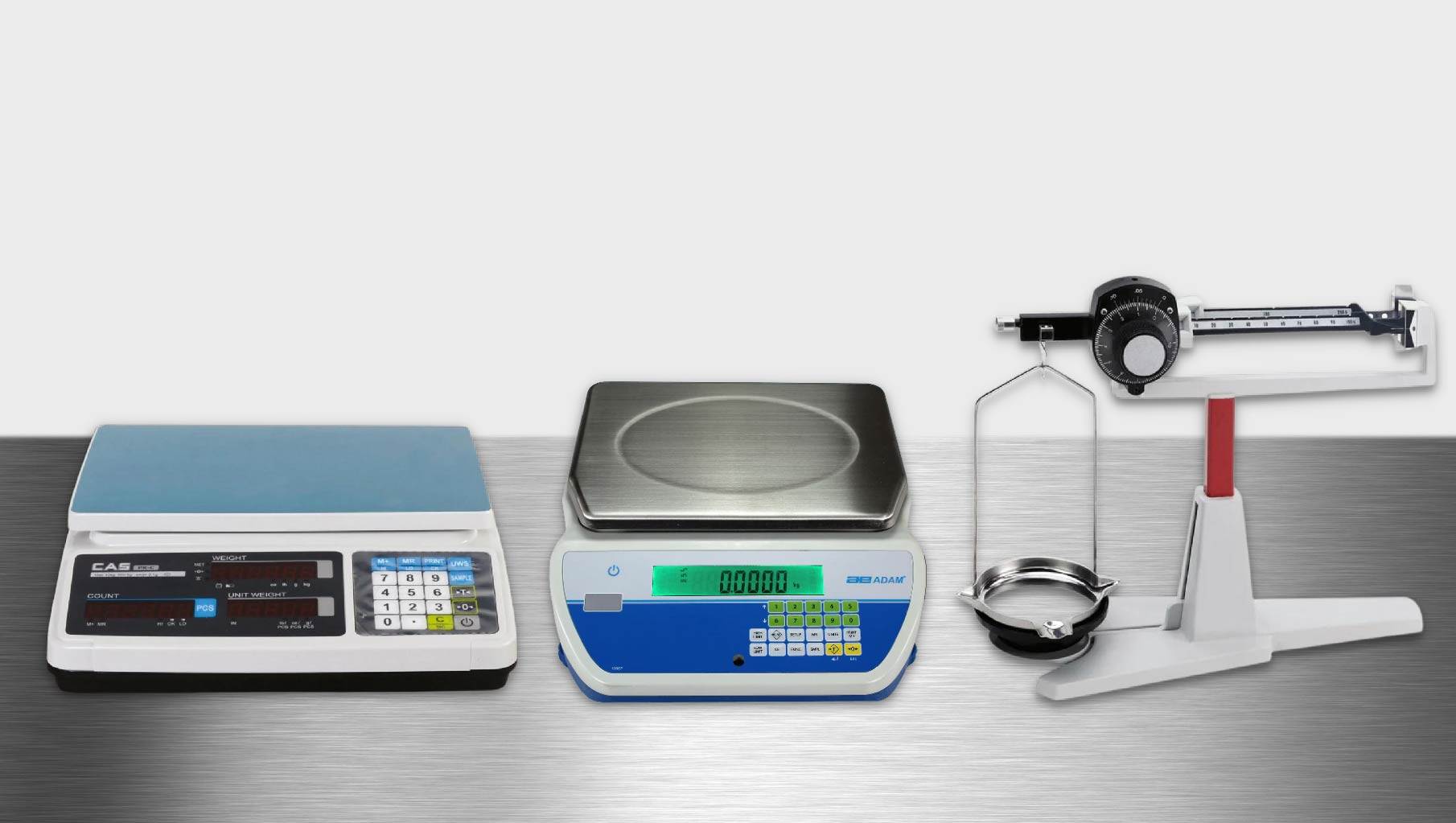No Products in the Cart

Balances play an integral role in a materials testing laboratory. This article will introduce you to some of the basic terminology associated with balances as well as explain the different variations that exist.
Laboratory Balance Terms
Accuracy. The ability of a scale to provide a result that is as close as possible to the actual value.
Calibration. The comparison between the output of a balance against a standard value.
Capacity. The heaviest load that can be measured on the instrument.
Precision. Also known as repeatability, this is the amount of agreement between repeated measurements of the same quantity.
Readability. This is the smallest division at which the scale can be read. It can vary as much as 0.1g to 0.0000001g.
Tare. The act of removing the weight of the weighing container to zero. This means the final measurement will be from the material to be weighed only. Most balances allow taring to 100% of capacity.
Types of Laboratory Balance
Top Loading Balance. These are weighing scales and balances that have a pan that is not enclosed by the body of the machine. Top pan balances commonly attach the weighing plate to the top of the balance and relate to machines that don’t require a draft shield to protect the weighing surface. The toploading balance does not offer protection from air disturbances and generally can weigh up to the low-kilogram range.
Analytical Balance. An analytical balance is a high precision weighing scale used to measure mass in micro measurement ranges (up to 0.0001g). They are highly sensitive and typically come with draft shields in order to protect the weighing chamber from outside vibrations. Analytical balances are used within a variety of different industries from science and medical applications to educational or veterinary use. Laboratories use analytical balances due to the sensitive nature of scientific experiments. They can be used for density determination, pipette calibration and to measure the mass of chemicals and other hazardous compounds to a high degree of accuracy. Chemists or pharmaceutical companies use approved analytical balances for formulating medicine as well as for check weighing medications before prescribing them to patients
Portable Balance. A Portable Balance is ideal for field work because of its user-friendly design and size while offering the same features as the Analytical balance such as piece counting, dynamic weighing, and unit conversion.
Semimicrobalances. Semimicrobalances are generally used for extremely specialized applications, such as differential weighing of a sample before and after incineration, measurement of coatings, or weighing chemically sensitive samples inside a glove box
Proper Care for Your Balance
A balance that is used frequently needs to be efficient, durable and reliable, so it is important that your equipment is properly maintained. Remember that the items to be measured should be at room temperature before weighing; a hot item will give a reading less than the actual weight due to convection currents that make the item more buoyant. If your balance is enclosed, the warm air in the case will weigh less than the air of the same volume at room temperature.
Always clean the balance as it is exposed to many chemicals that can react with the metal in the pan and destroy the surface. Also, keep in mind that a potentially dangerous situation could occur if chemicals are left on the balance pan. In many lab and classroom situations, more than one person uses a single balance for weighing. It would be impossible for each person to know what everyone else has been measuring and there is a chance that incompatible chemicals could be brought into contact if left uncleaned. A camel’s hair brush can be used to remove any dust that can spill over during weighing.
Another way of taking care of the balance is by doing a regular calibration. There are weight sets available that allow users to calibrate the scale themselves or the scales can be calibrated by hiring a professional, such as Measur Calibration Services, to calibrate them on site. The correct weight set needs to be chosen when calibrating a scale. The classes of weight sets start at Class One, which provides the greatest precision, then moves to Class Two, Three, Four and F, and finally down to a Class M, which is for weights of average precision. Weight sets have class tolerance factors, and as a general rule, the tolerance factor should be greater than the readability of the scale.
a.) Class 1 provides the greatest precision and is used for calibrating high precision analytical balances.
b.) Class 2 is used for calibrating high precision top-loading balances. The remaining classes utilize weights of decreasing precision. In fact, calibration weights themselves often need to be re-certified depending on the degree of accuracy required from the weighing instrument. Many governments and industry specifications require proof of accuracy. The weights can change due to scratches, wear, the accumulation of dirt and atmospheric corrosion, thus reducing the accuracy of the set.